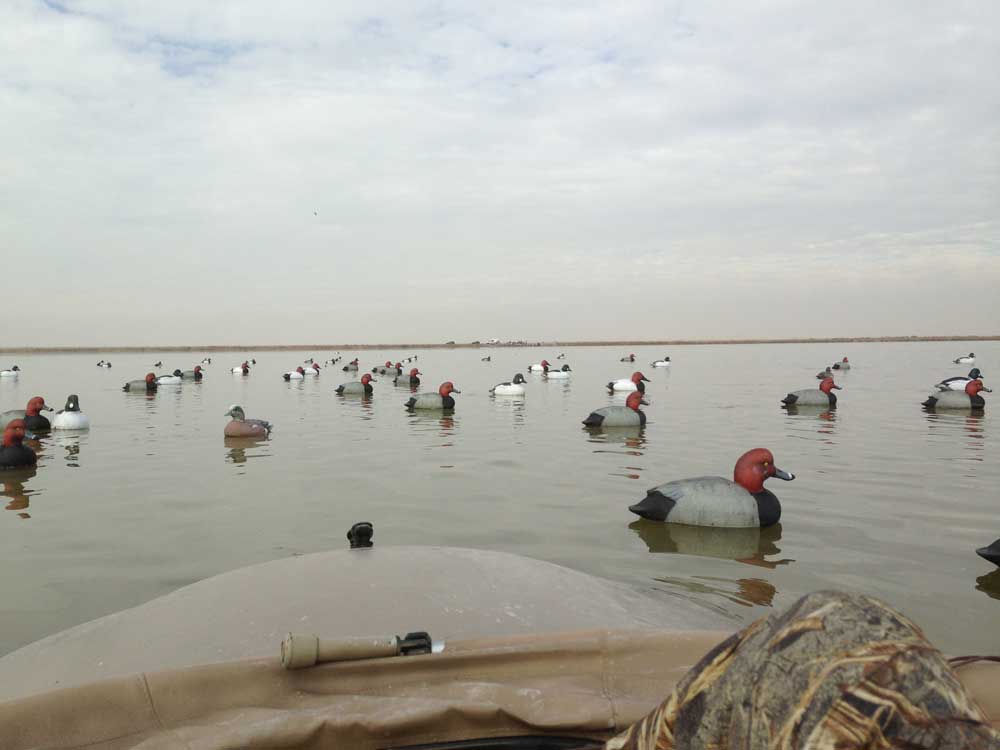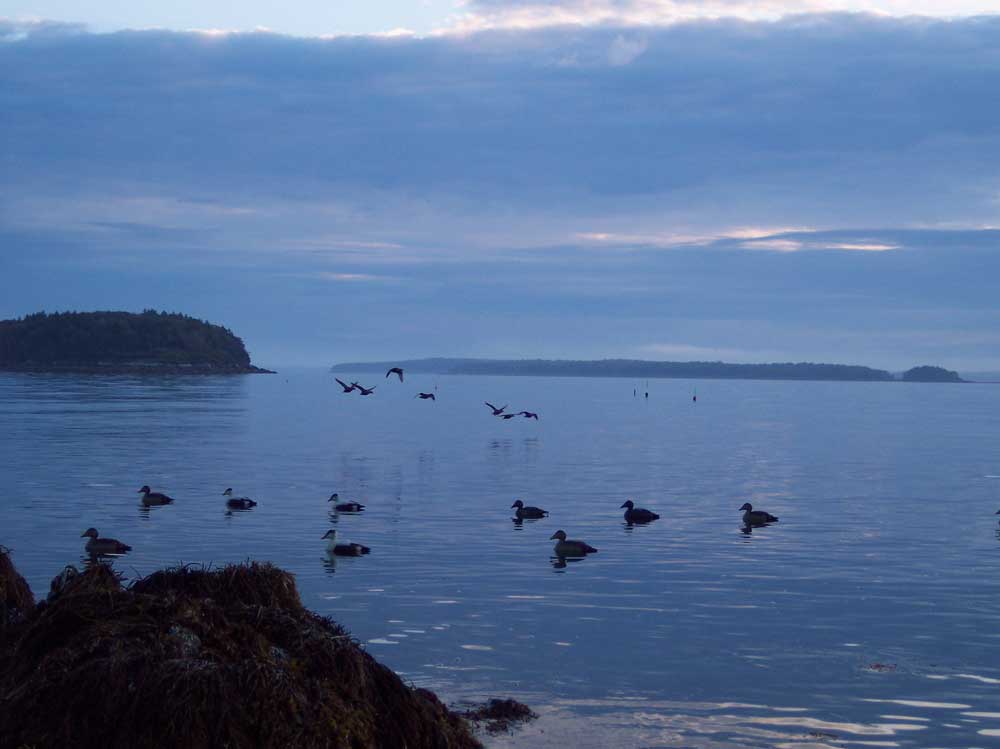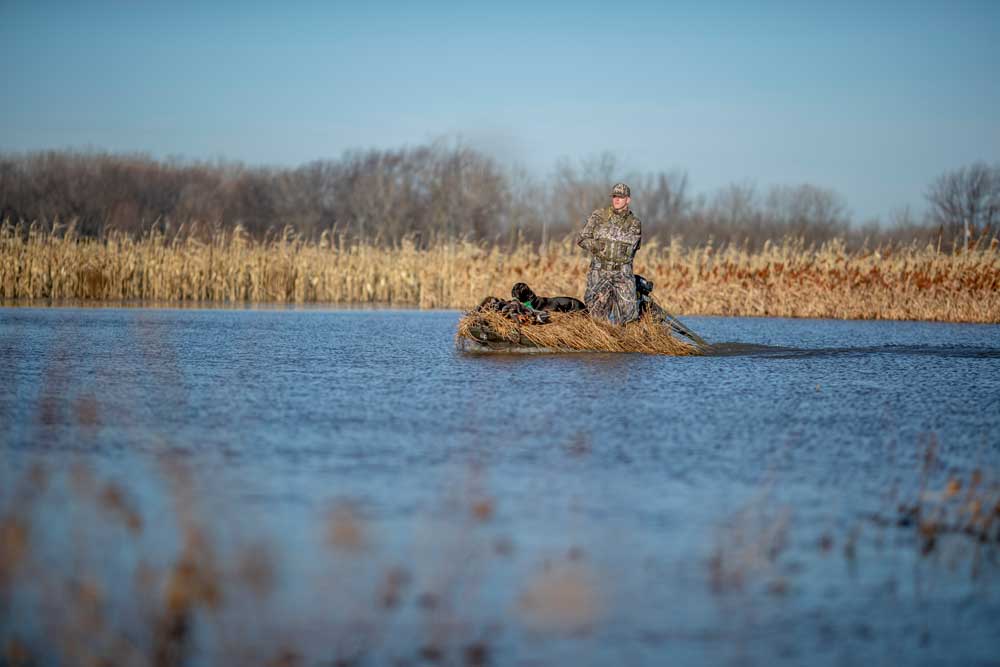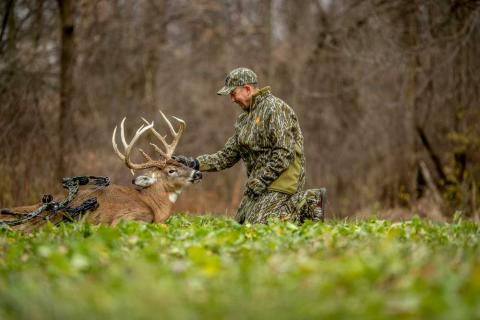Deep water decoy rigs call for different tactics.
Bob Humphrey

It was about mid-tide when I noticed the first decoy starting to move slowly away from our spread. “Don’t worry, it won’t go far,” I told my companion. Boy was I wrong. No sooner had it started picking up speed than it was joined by another...then another. Before long most of our spread was making way for open ocean, bringing a premature end to our morning hunt.
I should have known better. I had hunted puddle ducks in tidal waters before with my standard rigs but this was different. We were out on the coast, where the tidal range was greater and the current much stronger. It did not take long to float my decoys off their anchors and start hauling them out to sea. It was a mistake I vowed never to repeat.
Hunting deep-water ducks is a different game, whether targeting divers on the lakes and bays, or sea ducks along the ocean’s shoreline or coastal islands. You need different decoys, often more of them, and different rigs. Some of how you rig them is personal preference but there are also some general guidelines to follow.
Sea Ducks

Rigging sea duck decoys was a steeper learning curve for me because I picked up the sport at a time when few folks hunted them and I knew none of them; and commercial scoter and eider decoys were non-existent. Some hunters used hand-made floating silhouettes while many used painted Clorox bottles or milk jugs. The deeper water, which could range from 15-50 feet and the larger spreads also made it impractical to use individual anchor lines for every decoy so we improvised and eventually came up with a system.
My system starts with a mother line of braided decoy line (parachute cord) roughly 150-200 feet long. On either end is an anchor of some type. We use sash weights but most anything in the 10-pound range will work, with those less likely to hang up on rocks or structure being a better choice. Decoys are rigged with short lengths of cord - 2-3 feet - and longline clips. This depth allows dogs to swim through the spread without getting tangled up (another lesson learned the hard way). The anchor is deployed, then decoys are clipped along the mother line as it’s payed out, at roughly 4-6 foot intervals. Then the line is drawn tight and the other anchor deployed. I generally run 8-10 decoys per string, and at least 3 strings. It sounds fairly simple but wind, tide and rocks can sometimes make things challenging.
Even though you have the motion of the ocean and nearly always some wind - often more than you would like - adding motion is still key to attracting ducks. I wouldn’t subject a standard Mojo-type moving wing decoy to the rigors of the ocean so we use Ure-A-Duck at the head of at least one string. Lines are set parallel to the shoreline and slightly overlapping.
The tricky part is finding the right distance and depth to suit changes in tide. Too far out and they might be out of range when the tide rises and pushes you back from the shoreline. Too close and your spread might be on the rocks at low tide.
Divers

For divers I have had the benefit of learning from those far more experienced than me. On the Great Salt Lake we used coated cable Texas-rigged decoys. The cable is stiffer and more durable than cord and is rigged with a standard decoy anchor at one end, a crimped loop at the other and a large stainless steel swivel attached so that it can slide along the cable rather than being fixed at the end. This allows for easier retrieval and far fewer tangles when loading, transporting and deploying. Decoys are deployed individually, which is a bit more work, and makes them more prone to clumping with one another if not spaced far enough apart.
On the Carolina bays, we used a combination of Texas-rigged decoys and mats. For the latter, a dozen individual decoys are tied to large, semi-rigid mesh mats, which are then rolled up and stowed for storage. To deploy, we simply set out an anchor, attached the anchor line to the mat. Once unrolled, it creates a raft of ducks. Smaller, more rigid “rafts” can simply be stacked for transport and storage.































